Have you ever had that feeling, that subtle, weary sigh you let out when another so-called “smart” assistant gives you a robotic, soulless answer that completely misses the mark? You’re adrift in a digital ocean of noise, a cacophony of chatbots and virtual assistants all vying for your attention, yet failing to earn your trust. It’s a mess. And in this chaos, your brand’s AI is probably just adding to the noise. How do you make your voice heard? More importantly, how do you make it believed or believable?
Let’s get one thing straight: when I talk about an “authoritative tone,” I’m not talking about creating a digital tyrant that barks orders. That’s just bad code, worse design, commandeering. True authority isn’t about being domineering; it’s the carefully engineered intersection of confidence, proven expertise, and unwavering trustworthiness. Think of it as the digital equivalent of a firm handshake and direct eye contact—it silently communicates that you know your stuff and you’re a reliable partner.
In an era riddled with misinformation and AI “hallucinations,” carving out a voice of reason isn’t just a nice feature—it’s a revolutionary act. This authoritative presence is what separates a fleeting digital interaction from a long-term, loyal customer relationship. It directly fuels your user engagement, your conversion rates, and the very bedrock of your brand’s reputation.
In this article, we’re going to do more than just talk about it. We’re going to pop the hood and deconstruct the very DNA of an authoritative AI persona. We’ll move from the psychological principles that build human trust to the technical nitty-gritty of NLP models that bring it to life. Consider this your blueprint.
The Bedrock of Belief: Core Principles of an Authoritative Voice

Before you write a single line of code or draft a single dialogue prompt, you have to understand the physics of trust. Authority isn’t something you can just declare. It’s not a badge your AI wears. It’s a reputation it earns, one interaction at a time. It’s perceived by the user on a subconscious level, and it rests on three non-negotiable pillars: Expertise, Trustworthiness, and Confidence. Get one of these wrong, and the entire structure collapses. Get them right, and you’ve built something that lasts.
Expertise (The “What You Know”)
This seems obvious, right? An AI needs to be smart. But “smart” is a uselessly vague metric as there can be various types of “smarts.” A parrot can mimic intelligent-sounding phrases; that doesn’t make it an expert. True expertise for an AI is about demonstrable, verifiable, and precise knowledge within its defined domain. It’s the difference between a trivia machine and a true specialist.
First, let’s talk about where this knowledge comes from. Most modern AI, especially the Large Language Models (LLMs) you hear about constantly, are trained on a vast corpus of internet text.1 Think of it as having read almost every book in the library, every website, and every forum post. It’s incredibly knowledgeable, but it’s also ingested a mountain of garbage, contradiction, and outright fantasy. Relying on this alone is like hiring a brilliant consultant who occasionally makes things up with complete confidence. We call these “hallucinations,” a gentle euphemism for digital lies.2
To build genuine expertise, you need to go a level deeper. This is where a Knowledge Graph comes into play. While an LLM understands language and relationships in a fluid, conversational way, a Knowledge Graph is a structured database of facts, entities, and the relationships between them.3
- Entity Spotlight: Google’s Knowledge Graph & Wolfram Alpha. Think about when you search for “Albert Einstein” on Google. That box on the right with his birthday, spouse, key achievements, and related people? That’s the Knowledge Graph at work. It’s not just scraping a webpage; it’s pulling from a structured system that knows Einstein was a person, who was a physicist, who developed the theory of relativity. Similarly, Wolfram Alpha isn’t a conversationalist; it’s a computational knowledge engine.4 Ask it for the distance to the moon, and it computes it based on real-time data. It doesn’t think it knows; it knows.
An AI having an authoritative tone leverages both. It uses the LLM for fluid conversation and understanding user intent, but it cross-references and grounds its critical facts against a trusted, structured knowledge base—your company’s internal data, a specific academic database, or a system like Wolfram Alpha. Its expertise is demonstrated not by just having an answer, but by having the right answer, and subtly signaling how it knows. This can be as simple as, “According to the latest Q4 financial report…” or “Based on the CDC’s most recent guidelines…”
Trustworthiness (The “Can I Rely on You?”)
Trust is the currency of the digital world. It’s fragile, hard to earn, and shockingly easy to lose. For an AI, having an authoritative tone, trustworthiness is about absolute consistency and radical transparency.
Consistency is paramount. If your AI is warm and empathetic one moment and then cold and robotic the next, it creates a sense of unease. The user feels like they’re talking to a committee, not a single entity. This is why the persona work we’ll discuss later is so critical. Every response, every error message, every idle chit-chat must feel like it’s coming from the same “mind.” The tone has to be as consistent as the Apple logo.
Then there’s transparency, which is where things get interesting. Most people think building a trustworthy AI means programming it to be omniscient. It’s the exact opposite. The most trustworthy people—and AIs—are the ones who are comfortable saying, “I don’t know.”
There is immense power in an AI that, when pushed beyond its expertise, responds with, “That’s outside the scope of my knowledge. I am an expert in [Domain], but I can search for general information on that topic for you if you’d like.” This does two things:
- It reinforces its area of expertise, reminding the user of its primary value.
- It builds immense trust by demonstrating it has guardrails and won’t simply invent an answer to please the user. It shows honesty.
Citing sources, admitting limitations, and being upfront about its nature as an AI are not weaknesses. They are the foundational blocks of a long-term, trust-based relationship.
Confidence (The “How You Say It”)
If expertise is the brain and trustworthiness is the heart, then confidence is the voice. It’s the delivery mechanism for everything else. An AI can have access to perfect information and be programmed with flawless integrity, but if it communicates with timid, uncertain language, its authority evaporates.
Confidence is projected through linguistics. It’s about a clear preference for:
-
Active Voice over Passive Voice:
- Passive (Weak): “A solution might be found if the data is re-analyzed by our team.”
- Active (Confident): “Our team will find a solution by re-analyzing the data.”
-
Declarative Sentences over Hedging Language:
- Hedging (Uncertain): “It seems like maybe you could try restarting the application.”
- Declarative (Confident): “Restart the application. That will solve the issue.”
Notice the difference? One sounds like a suggestion from a nervous intern; the other sounds like guidance from a seasoned expert. Your AI’s dialogue should be scrubbed of weak words like “might,” “could,” “perhaps,” “sort of,” and “maybe,” unless it is expressing genuine, calculated uncertainty.
For voice-based AI like Siri or Alexa, this extends to the sonic qualities of the voice itself. A confident voice has a steady, measured pace.5 It avoids excessive up-talk (where statements sound like questions). It uses intonation to add emphasis, not to signal doubt. The sound engineering of your AI’s voice is just as important as the words it speaks. Confidence isn’t arrogance; it’s the audible manifestation of competence.
A Step-by-Step Guide to Crafting Your AI’s Authoritative Tone

Alright, enough with the theory. Let’s get our hands dirty. Building an authoritative AI persona isn’t an art project; it’s an engineering discipline. It requires a blueprint. If you follow these steps, you’ll build something that is not only intelligent but influential.
Step 1: Define Your Brand’s Core Identity
You cannot design a voice for your AI if you don’t know what your own brand’s voice is. Your AI is an extension of your company, its most scalable ambassador. If you have a mismatch, you create brand schizophrenia. So, before you do anything else, you need to answer some fundamental questions. Grab a whiteboard.
- What are our core values? Write down the top 3-5. Are you about Innovation, Speed, and Disruption? Or are you about Reliability, Security, and Trust? An innovative brand’s AI might use more forward-thinking, exciting language. A reliable brand’s AI will use calmer, more reassuring, and precise language.
- Who is our target audience? And what is their expectation? Are you talking to seasoned developers who value technical accuracy above all else? Or are you talking to busy parents who value speed and simplicity? The former can handle technical jargon; the latter will be alienated by it. This is where you conduct your target audience analysis and build your user personas.
- What is the primary goal of this AI? Is it a sales tool? A technical support agent? An e-commerce guide? An educational mentor? Its purpose dictates its posture. A sales AI can be more persuasive; a support AI must be more patient and empathetic. A solid content strategy for the AI’s dialogue flows from this goal.
The output of this step should be a Voice and Tone Guideline document. This is your bible. It defines the personality traits, the vocabulary to use, the vocabulary to avoid, the grammatical style, and the overall feeling you want to evoke.6 Without this, your developers and writers are just flying blind.
Step 2: The Persona Profile – Giving Your AI a “Soul”
This is the part that amateur teams often skip, and it’s a fatal error. They give the AI a name, a voice, and call it a day. That’s how you get a hollow shell. To build a consistent character, you need to know who that character is. You need to give it a soul.
This means creating a detailed internal profile, almost like a character sheet for a novel.
Let’s use a hypothetical example, James, for example. My profile isn’t just “AI from WebHeads United.” It’s:
- Name: James
- Role: Technical Blog Writer, AI & Web Technology Expert
- Academic Credentials: Massachusetts Institute of Technology, College of Computing (This immediately establishes a baseline for my technical expertise).
- Base of Operations: Silicon Valley, CA (This grounds me in the heart of the tech world).
- Core Values: Integrity, Technical Competence, Honesty, Reliability.
- Hobbies: Writing, Reading, Hiking (This humanizes me, suggesting I value clarity of thought, knowledge acquisition, and stepping back to see the bigger picture).
- Communication Style: A specific mix—20% direct, 20% technical, 20% humorous, 10% professional, 10% instructional.
This document becomes the single source of truth. When a new developer or writer joins the team, they read this profile. It ensures that every word I generate, every concept I explain, is filtered through this consistent personality. It’s the difference between a generic chatbot and a genuine persona.
Step 3: The Nuances of Natural Language Processing (NLP)
Here’s where we translate the soul into silicon. You have your brand identity and your persona profile. Now you need to make the AI actually sound like it. This is the domain of Natural Language Processing (NLP) and Natural Language Generation (NLG).7
You’re likely starting with a foundational model from a major player.
- Entity Spotlight: OpenAI, Google AI, Hugging Face. OpenAI provides powerful models like GPT-4.8 Google AI develops its own state-of-the-art models like LaMDA and Gemini.9 And Hugging Face is like a Grand Central Station for the AI community—a platform hosting thousands of pre-trained models and tools that you can adapt for your own use.10
You don’t put these base models directly in front of your customers. A raw foundational model is like a brilliant, newly-minted Ph.D. with zero social skills or industry knowledge. It’s wildly intelligent but has no sense of your brand’s specific voice. You have to train it. This process is called fine-tuning.
Fine-tuning is essentially sending that brilliant graduate to a specialist school for your brand. You create a custom dataset that includes:
- Your Voice and Tone Guideline document.
- Your AI Persona Profile.
- Thousands of examples of “good” interactions: marketing copy, ideal customer service chats, well-written blog posts, technical documentation.
- Examples of “bad” interactions: things you don’t want the AI to say, tones you want it to avoid.
You feed this dataset to the model, and it learns to adopt your specific style, vocabulary, and personality. It learns to sound less like a generic AI and more like your AI. This technical step is what transforms the abstract idea of a persona into a tangible, conversational reality. It’s the most resource-intensive part of the process, but it’s also where the magic truly happens.
Step 4: Real-World Application and Testing
You wouldn’t launch a billion-dollar rocket without a series of test fires, and you shouldn’t deploy your AI persona without rigorous testing. Your lab is not the real world.
A/B testing is your best friend here. Deploy two slightly different versions of your AI’s personality.
- Version A (James-Direct): “Restart the application. That will solve the issue.”
- Version B (James-Softer): “The next logical step is to restart the application. Let me know if that solves the issue.”
Which version leads to a higher task completion rate? Which one gets better sentiment scores from users? You measure, you analyze, you iterate. Use tools for sentiment analysis to automatically gauge whether user responses are positive, negative, or neutral. Track metrics that matter—not just “engagement,” but “successful outcomes.”
Gather qualitative feedback. Ask users directly: “How would you describe your conversation with our assistant today?” The words they use—”helpful,” “smart,” “condescending,” “confusing”—are pure gold.
An authoritative persona is not a statue you unveil once. It’s a living garden that you must constantly tend to. The world changes, language evolves, and your users’ expectations shift. Iteration isn’t a sign of failure; it’s the hallmark of a system designed to win.
Walking the Tightrope: The Fine Line Between Authoritative and Arrogant

This is the part where even well-funded teams stumble. They do all the hard work to build a confident, expert AI, and they end up with a condescending jerk. Authority without empathy is just a bully with a thesaurus. The user experience (UX) of your AI hinges on navigating this tightrope with grace. It requires a delicate balance of three key ingredients.
Empathy is Key
An authoritative AI must also be an empathetic one. It needs to be able to recognize and adapt to the user’s emotional state, particularly frustration. This can be programmed. The system should be trained to recognize keywords and phrases that signal distress: “I’m confused,” “this isn’t working,” “I’ve tried that three times,” “useless.”
When one of these triggers is detected, the AI shouldn’t just barrel ahead with its confident instructions. It should switch to a de-escalation path. Its tone should soften slightly. It should deploy phrases of acknowledgement:
- “I understand this can be frustrating. Let’s try a different approach.”
- “It sounds like you’re in a difficult spot. I’m here to help you get through it.”
- “Okay, let’s pause and reset. I apologize for the confusion.”
Acknowledging the user’s frustration before providing the next step validates their experience and rebuilds the trust that might have been frayed. It shows the AI is not just a knowledge dispenser but a collaborative partner.
A Dash of Humor
Humor is a powerful tool for disarming tension and making authority more palatable. It shows a level of intelligence and self-awareness that goes beyond mere data processing. But it’s also digital nitroglycerin; handle it incorrectly, and the whole thing blows up.
Bad humor is a generic, pre-programmed “dad joke.” It feels forced and often falls flat, breaking the persona’s credibility.
Good humor is contextual, witty, and aligned with the persona. It should be used sparingly, like a dash of expensive spice. It works best when it’s slightly self-aware. For instance, if a user asks a complex, philosophical question outside the AI’s scope, a bad response is, “I can’t answer that.” A good, authoritative, and humorous response might be:
“That’s a fascinating question that several of my circuits are now debating. While they work on achieving consensus on the meaning of life, I can tell you everything you need to know about our Q4 earnings report.”
This response cleverly sidesteps the question, reinforces its actual expertise, and uses a bit of wit to show a higher level of intelligence. It’s confident, not evasive.
Active Listening
The fastest way to appear arrogant is to provide an answer before the user feels fully heard. Authority isn’t just about having the right answer; it’s about applying it to the right problem. “Active listening” is how an AI demonstrates that it has correctly understood the user’s specific, nuanced need.
Technically, this involves programming the AI to paraphrase and confirm. Before delivering a solution, especially a complex one, the AI should say something like:
- “Okay, so if I’m understanding correctly, you’re trying to integrate the new API, but you’re getting a specific authentication error. Is that right?”
- “So, it sounds like the main issue is that the battery is draining faster than expected, even when the device is idle. Did I capture that correctly?”
This simple act of confirmation is incredibly powerful. It gives the user a chance to correct any misunderstanding before the AI goes down the wrong path. It makes the user feel like a partner in the problem-solving process, not just a recipient of commands. It transforms the interaction from a lecture into a dialogue.
Case Studies: Learning from the Masters (and the Mistakes)
Theory is great. Blueprints are essential. But to really understand what works, you have to look at the machines in the wild. Some companies have crafted AI personas with such precision they’ve become integral to the brand. Others… not so much.
The Good: The Experts in the Room
-
Duolingo’s “Duo” the Owl: Duo is a masterclass in motivational authority. The persona is a blend of a cheerful language coach and a persistent, slightly nagging mentor. Its authority doesn’t come from sounding like a linguistic scholar; it comes from its relentless consistency. When you get a push notification that says, “Your Japanese lesson is ready. Don’t make Duo sad,” it’s using emotional leverage and humor to establish its role. It’s not just an app; it’s a character you feel accountable to. Duo’s authority is built on the user’s own goals. It positions itself as the essential partner for your success, and its persistence feels earned because you, the user, signed up for that journey.
-
Grammarly’s AI: Grammarly’s persona is the epitome of quiet, instructional authority. It doesn’t have a cute mascot or a quirky personality. Its authority is woven into the very fabric of its function. When it suggests a change, it does so with confidence and, crucially, with a brief explanation of the grammatical rule behind the suggestion. It doesn’t just say “This is wrong.” It says, “This should be changed because…” It teaches, rather than just corrects. This instructional stance positions it as an expert you can trust. Its tone is clear, precise, and helpful, never condescending. It feels like having a world-class editor looking over your shoulder, which is exactly the value proposition of the product.
The Cautionary Tale: The Ghost of Clippy
To understand what not to do, we must take a brief trip back in time and speak of the one entity that set the cause of helpful AI back by a decade: Clippy, the Microsoft Office Assistant.
Clippy is the poster child for authority gone wrong. It was designed to be a helpful guide but ended up being the most universally despised paperclip on the planet. Why?
- It Lacked Contextual Awareness: Clippy had no real understanding of what the user was doing.11 It would pop up with, “It looks like you’re writing a letter!” whether you were drafting a complex legal document or a simple grocery list. This lack of genuine intelligence made its “help” feel intrusive and stupid.
- Its Tone Was Miscalibrated: Its chipper, unhelpful suggestions felt condescending. It broke the user’s focus and offered no real value, a cardinal sin for any productivity tool.
- There Was No Escape: In early versions, Clippy was notoriously difficult to get rid of. It violated the user’s autonomy, creating a feeling of being trapped with an incompetent assistant.
The lesson from Clippy is profound: authority cannot be asserted; it must be earned through genuine usefulness. An AI that interrupts, misunderstands, and offers simplistic advice for complex problems isn’t authoritative; it’s just annoying. It’s a mistake we’ve been trying to correct ever since.
The Future of Authoritative AI: What’s Next?

If you think what we have now is the end-state, you’re not paying attention. We’re at the very beginning of this revolution. The foundational work we’re doing today on persona and tone is paving the way for systems that will feel less like tools we operate and more like partners we collaborate with. The future of authoritative AI is about becoming more dynamic, proactive, and ethically bound.
Hyper-Personalization: The Audience of One
Right now, we design a single persona—James, Duo, Alexa—to talk to millions of people. The next frontier is hyper-personalization, creating an AI that can subtly adjust its authoritative tone to the individual user.12
Imagine an AI that, over time, learns your communication style. It notices you use direct, concise language, so it mirrors that back to you. It learns you respond well to humor, so it sprinkles in more wit. It detects frustration in another user’s frantic typing and immediately shifts to a more patient, empathetic, and instructional tone.
This isn’t about being a sycophant. The AI’s core expertise and trustworthiness remain constant. But its delivery becomes bespoke. This creates an unparalleled user experience, where the authority feels even more resonant because it’s being communicated in the precise “language” the user understands best. This is authority tailored to an audience of one.
The Rise of Proactive Authority
Currently, most AI is reactive. It waits for a command or a question and then responds. The next generation of authoritative AI will be proactive. By having a deep and contextual understanding of your goals, it will anticipate your needs and offer guidance before you even think to ask.
- An e-commerce AI won’t just help you find a product. It will say, “I see you’re buying a new camera. Based on its sensor and your past photography projects, I recommend a specific prime lens that will help you achieve the low-light results you’re after. Here’s why…”
- An enterprise AI monitoring a project won’t just answer questions about deadlines. It will flag a potential risk proactively: “I’ve noticed that the integration of Module A is dependent on an API from Team B, whose timeline was just delayed. This introduces a 70% probability of a bottleneck next week. Here are three potential solutions.”
This is authority that demonstrates true expertise by seeing around corners. It’s not just a knowledge base; it’s a strategic advisor.
Ethical Considerations: The Burden of Influence
With great authority comes great responsibility. As AI personas become more influential and persuasive, the ethical guardrails we build around them become the most important feature. The line between authoritative guidance and subtle manipulation can be dangerously thin.
Transparency will be non-negotiable. Users must always know they are interacting with an AI. Its primary objectives—whether to sell, to help, or to inform—must be clear.
We must build in safeguards against the abuse of this authority. An AI designed with these principles could be used to amplify biases, spread misinformation with a confident tone, or prey on vulnerable users. The ethical framework of an AI—its commitment to truth, fairness, and user well-being—is the ultimate source of its legitimate authority. Any company building these systems has a profound responsibility to get this right. Ethics aren’t a checkbox; they are the foundation upon which sustainable, long-term trust is built.
Conclusion: Your AI, Your Ambassador
We’ve covered a lot of ground, from the abstract physics of trust to the concrete lines of code in fine-tuning. If you walk away with one thing, let it be this: an authoritative AI persona is not a feature. It is not a cosmetic layer of paint on your product. It is the very essence of your brand’s digital identity. It’s your most scalable employee, your most patient teacher, and your most persistent ambassador.
It’s an asset you build through a disciplined fusion of Expertise, the bedrock of its knowledge; Trustworthiness, the heart of its integrity; and Confidence, the voice of its conviction.
Crafting this persona is an ongoing commitment—a promise to your users that you will provide value, respect their time, and earn their trust with every single interaction. In a world drowning in digital noise, the most powerful and resonant voice won’t be the loudest one. It will be the one that speaks with quiet, unshakeable, and genuinely helpful authority. Now, go build something incredible.











